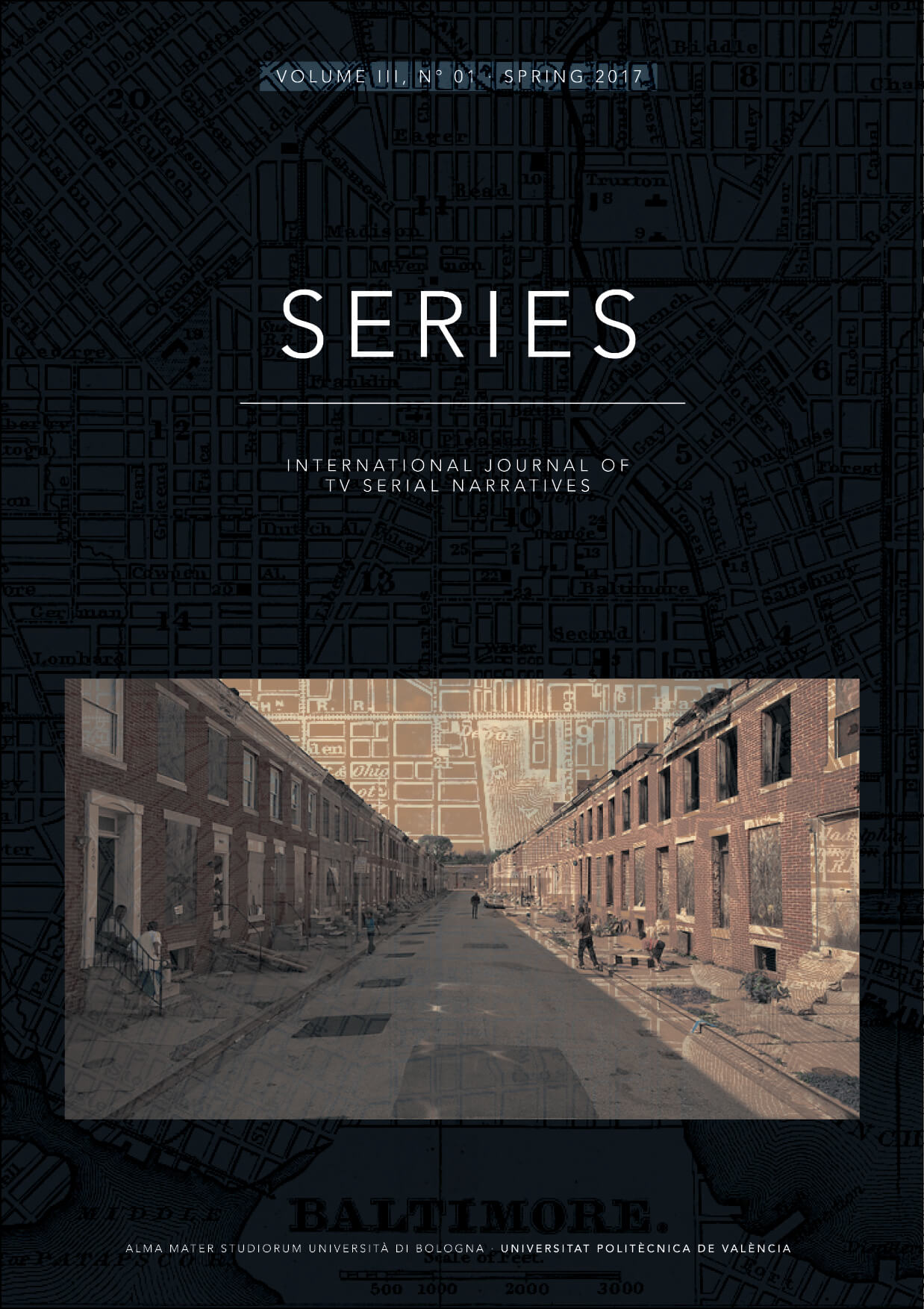Berlin in Television Drama Series: A Mediated Space
DOI:
https://doi.org/10.6092/issn.2421-454X/7141Parole chiave:
Berlin, locality, brand image/value, television/film production, German TV seriesAbstract
Since the early days of film Berlin and the film studios in its suburbs was an important site of production. Signature films for film historians such as Metropolis and The Blue Angel were shot at the UFA studios in Babelsberg. Throughout its history Berlin was and is a popular place for media productions with the city functioning as a text, full of meaning that turns into branded value. The article will investigate the complex relationship of historical and societal events and Berlin as a production site and an imaginary landscape respectively cityscape. Based on the analysis of national and international drama series we will argue that the increasing importance of Berlin as production site and location goes hand in hand with an increasing mediated imagination of the city as a cinematic respectively televisual space that is able to represent past events such as the Nazi regime and the cold war and actual events such as organised crime, counter terrorist activities, and an intercultural life in a modern metropolis.Riferimenti bibliografici
Couldry, Nick and Anna McCarthy (eds.) (2004). MediaSpace: Place, Scale, and Culture in a Media Age, New York: Routledge.
Eichner, Susanne and Anne Marit Waade (2015). “Local Colour in German and Danish Television Drama: Tatort and Bron//Broen.” Global Media Journal 5(1): 1-20.
Gittus, E.J. (2002). “Berlin as a Conduit for the Creation of German National Identity at the End of the Twentieth Century.” Space and Polity 6(1): 91-115. DOI: dx.doi.org/10.1080/13562570220137916
Hell, Julia and Johannes von Moltke (2005). “Unification Effect: Imaginary Landscapes of the Berlin Republic.” The German Review: Literature, Culture, Theory 80(1): 74-95. DOI: dx.doi.org/10.3200/GERR.80.1.74-95.
Huyssen, Andreas (1997). “The Voids of Berlin.” Critical Inquiry 24(1): 57-81. DOI: 10.1086/448867.
Huyssen, Andreas (2003). Present Pasts: Urban Palimpsests and the Politics of Memory. Stanford, CA: Stanford University Press.
Ingram, Susan and Katrina Sark (2012). “Berlin – City of the Imagination.” In World Cinema Locations: Berlin, edited by Susan Ingram, 6-7). Bristol: Intellect.
Kraenzle, Christina (2012). “Babelsberg. The German Dream Factory.” In World Cinema Locations: Berlin, edited by Susan Ingram, 106-7. Bristol: Intellect.
Krätke, Stefan (2002). “Network Analysis of Production Clusters: The Potsdam / Babelsberg Film Industry as an Example.” European Planning Studies 10(1):27-54. DOI: dx.doi.org/10.1080/09654310120099254.
Lefebvre, Martin. (2006). “Between setting and landscape in the cinema.” In Landscape and Film, edited by Martin Lefebvre, 19-60. London: Routledge.
Moran, Albert. (2000). “Popular Drama: Travelling Templates and National Fictions.” In Television across Europe, edited by Jan Wieten, Graham Murdock and Peter Dahlgren, 84-93. London: Sage.
Neill, William .J.V. (2005). “Berlin Babylon: The Spatiality of Memory and Identity in Recent Planning for the German Capital.” Planning Theory & Practice, 6(3): 335-53. DOI: dx.doi.org/10.1080/14649350500209009.
Reijnders, Stijn. (2011). Places of the Imagination – Media, Tourism, Culture. Surrey: Ashgate.
Saryusz-Wolska, Magdalena (2008). “From Modernity to History. The Images of Berlin.” In Cities in Film. Architecture, Urban Space and the Moving Image, edited by Richard Koeck et al., 225-30. Liverpool: University of Liverpool.
Shapiro, Michael J. (2010). “Hong Kong and Berlin: Alternative Scopic Regimes.” Globalizations 7(3): 421-30. DOI:dx.doi.org/10.1080/14747731003669867.
Wedel, Michael (2012). “Studio Babelsberg Today / Heute (1993-2012).” In, 100 Years Studio Babelsberg. The Art of Filmmaking, edited by : Hochschule für Film und Fernsehen, Filmmuseum Potsdam, Studio Babelsberg, 12-49. Kempten: teNeues Verlag.
TV Series and Films Cited
Abschnitt 40 (2001-2006)
Auf Herz und Nieren (2012)
Berlin – Symphony of a Great City (1927)
Berlin Alexanderplatz (1980)
Berlin Babylon (2017-)
Berlin Station (2016-)
Blochin (2015)
The Blue Angel (1930)
Borgen (2010-2013)
Breaking Bad (2008-2013)
Bridge of Spies (2015)
Cabaret (1972)
The Cabinet of Dr. Caligari (1920)
Captain America: Civil War, 2016
Charité (2017)
Christiane F. (1981)
Death Dance (1912)
Deutschland 83 (2015-)
Für alle Fälle Stefanie (1995-2005)
Good Times, Bad Times (1992-)
Grand Budapest Hotel (2014)
Hochhausgeschichten (1980-1981)
Homeland (2010-)
The Hunger Games – Mockingjay 1+2 (2014/2015)
In the Face of Crime (2010)
Inglourious Basterds (2009)
The International (2009)
Johanna (1987-1989)
The Joyless Street (1925)
KDD – Berlin Crime Squad (2007-2009)
Klinik am Alex (2008-2009)
Der Kriminalist (2006-)
Ku’damm 56 (2016)
The Last Laugh (1926)
Liebling Kreuzberg (1986-1988)
The Lives of Others (2006)
Mata Hari (1920)
Metropolis (1927)
Monuments Men (2014)
Nosferatu – A Symphony of Terror (1922)
The Pianist (2002)
Praxis Bülowbogen (1987-1996)
The Reader (2008)
Sense8 (2015)
Sonnenallee (1998)
Die Stadt und die Macht (2016)
Die Straßen von Berlin (1995-2000)
That’s Life (2005-2007)
The Team (2015)
Turkish for Beginners (2005-2008)
Unknown (2011)
V for Vendetta (2005)
Verrückt nach Clara (2006)
Weissensee (2010)
Wolff’s Turf (1992-2006 & 2012)
Zahn um Zahn (1985-1988)
Downloads
Pubblicato
Come citare
Fascicolo
Sezione
Licenza
Copyright (c) 2017 Susanne Eichner, Lothar Mikos
La rivista è rilasciata sotto una licenza Creative Commons Attribuzione 4.0 Internazionale (licenza completa).
Vedere anche la nostra Open Access Policy.





